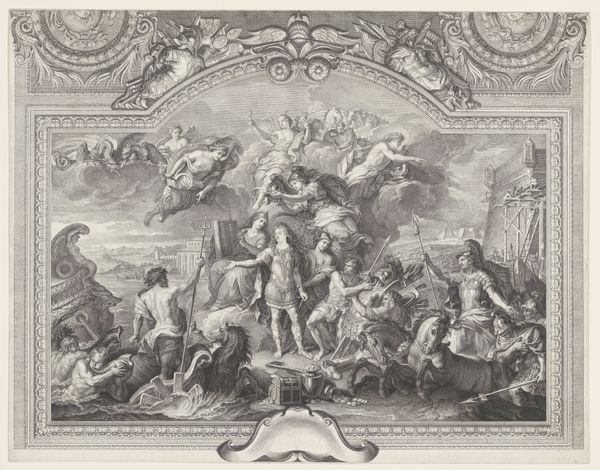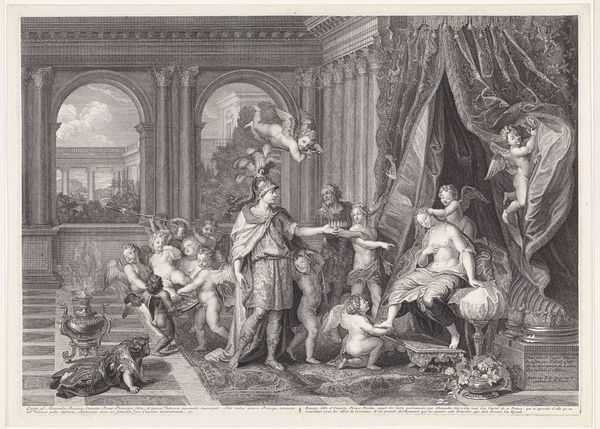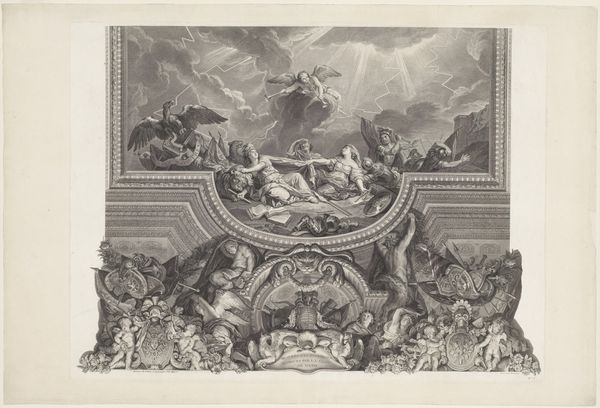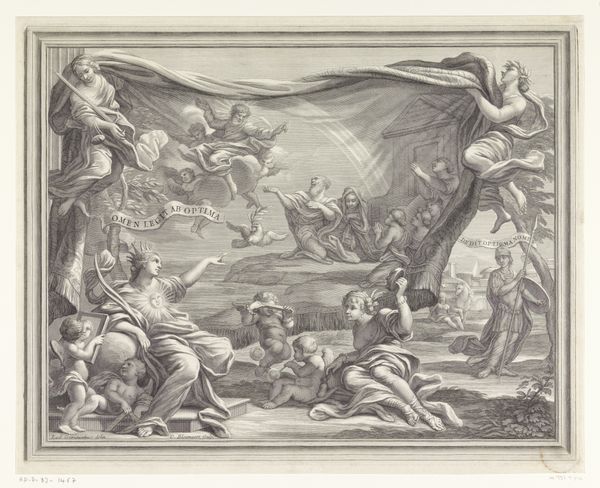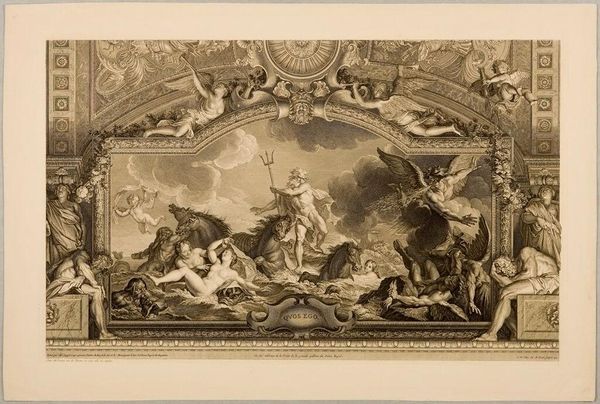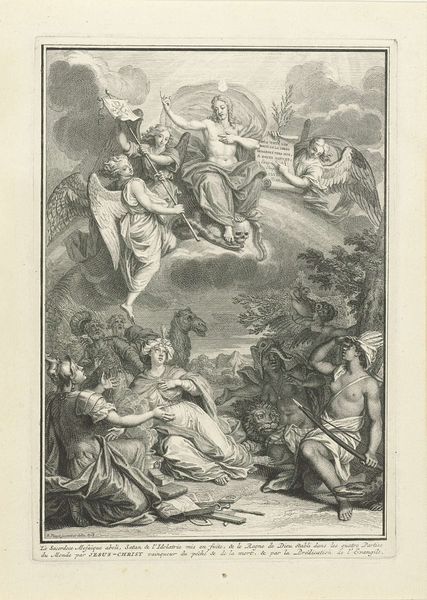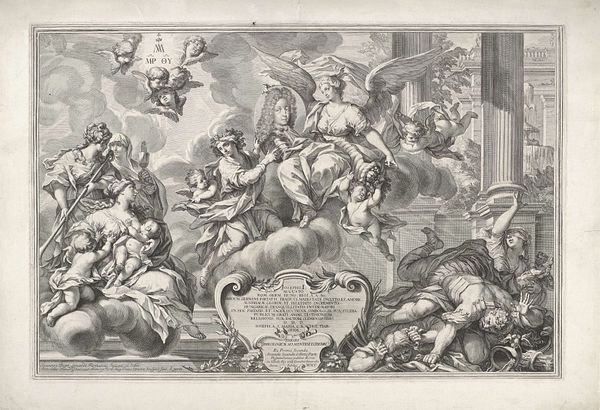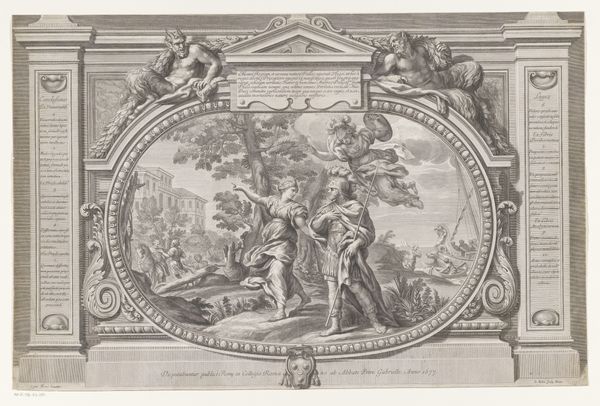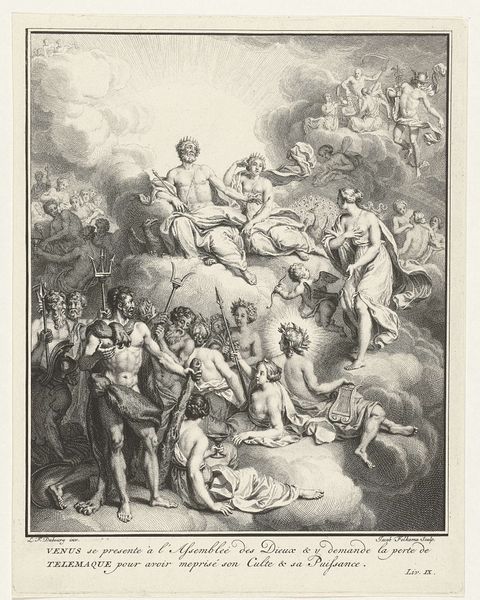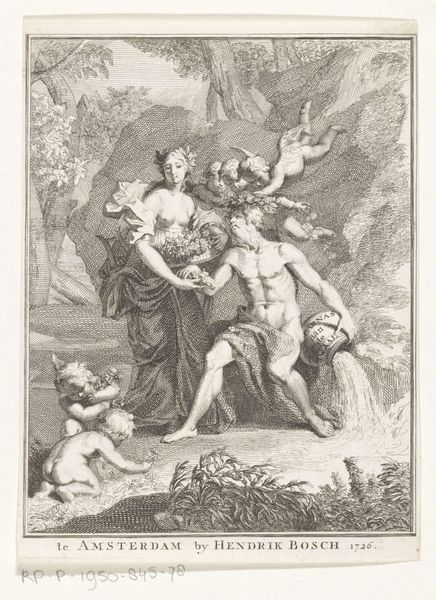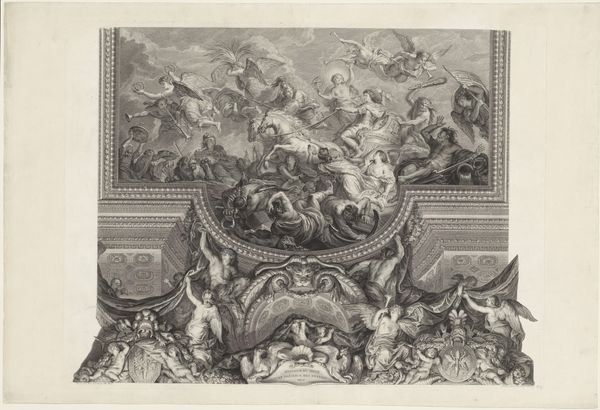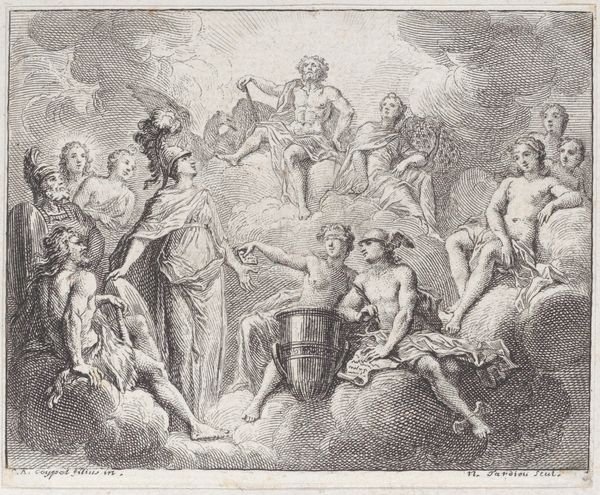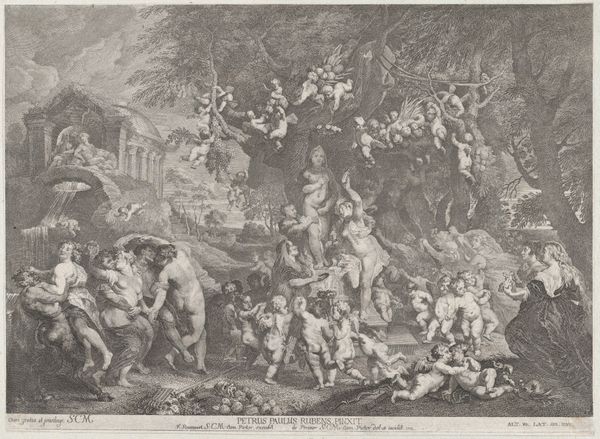
engraving
#
allegory
#
baroque
#
landscape
#
figuration
#
line
#
history-painting
#
engraving
Dimensions: height 442 mm, width 707 mm
Copyright: Rijks Museum: Open Domain
Editor: Here we have Bernard Picart's "Neptunus kalmeert de golven," or "Neptune Calming the Waves," an engraving from 1717 currently residing in the Rijksmuseum. There is so much texture created with line in this print; it seems almost sculptural. How do you read this work? Curator: Immediately, I’m drawn to consider the material process. Look closely—the deliberate act of engraving, using tools to incise lines into a metal plate, then using that plate to reproduce this scene of mythological power. This engraving isn't merely about depicting Neptune; it embodies a specific mode of production deeply intertwined with early 18th-century print culture and consumption. Editor: So, you’re focusing on how it was made and distributed? Curator: Exactly. Ask yourself, why choose engraving over other, quicker, methods? The precision, the reproducibility. This wasn’t just art for the elite. Printed images like these democratized access to mythological narratives, bringing them into homes and workshops, affecting patterns of cultural transmission. The social context surrounding the piece’s consumption becomes paramount, impacting class structures by introducing those lower in society to "fine art". Editor: Interesting! I hadn’t really thought about the "consumer" aspect. Curator: Think about the labor involved—the engraver’s skill, the printer's work, the system of distribution that allowed these images to circulate. How does recognizing this influence how we interpret the content, the image of Neptune’s dominance? Editor: So by considering the method and context, we understand that an engraving like this plays a specific role in its time. Thanks! Curator: Precisely. The means of production aren't separate from the meaning; they are integral to it.
Comments
No comments
Be the first to comment and join the conversation on the ultimate creative platform.
